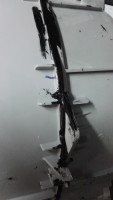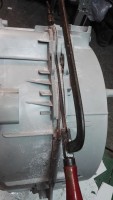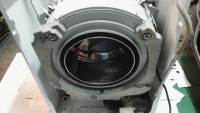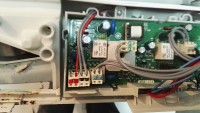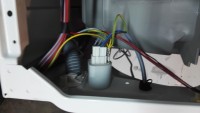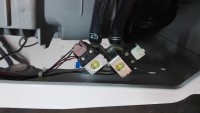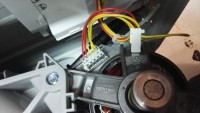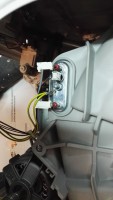Hello
Unfortunately, in my washing machine the drum bearing has probably fallen. The washing machine began to rumble quite heavily when spinning.
After a few phone calls to the warehouse, I learned that it is impossible to replace the bearing itself (despite the fact that it is available for purchase) because the drum tank is glued and it is not possible to remove the drum and knock out bearings without cutting it.
Is any of the forum members able to confirm this information ?? Perhaps there is a mania, how to undress the tank ??
Is it possible to cut it on the weld line itself, and then glue with silicone to the glass?
Out of curiosity, I took the back of the washing machine, unscrewed the wheel and everything looks quite straight like any other washing machine. The bearing used is PPL Poland 6304Z. In the warehouse for one bearing (and from what I've learned there are two), they're screaming 40 zlotys. I do not want a PPL bearing anymore, so at Allegro I found the SKF 6304 2Z (ZZ) bearing for PLN 30 a piece. Is it the same?
The model of the washing machine is Electrolux EWS 126540W NO 9145292207/01
Attached photo of the back of the washing machine:

Thank you very much for your help.
Unfortunately, in my washing machine the drum bearing has probably fallen. The washing machine began to rumble quite heavily when spinning.
After a few phone calls to the warehouse, I learned that it is impossible to replace the bearing itself (despite the fact that it is available for purchase) because the drum tank is glued and it is not possible to remove the drum and knock out bearings without cutting it.
Is any of the forum members able to confirm this information ?? Perhaps there is a mania, how to undress the tank ??
Is it possible to cut it on the weld line itself, and then glue with silicone to the glass?
Out of curiosity, I took the back of the washing machine, unscrewed the wheel and everything looks quite straight like any other washing machine. The bearing used is PPL Poland 6304Z. In the warehouse for one bearing (and from what I've learned there are two), they're screaming 40 zlotys. I do not want a PPL bearing anymore, so at Allegro I found the SKF 6304 2Z (ZZ) bearing for PLN 30 a piece. Is it the same?
The model of the washing machine is Electrolux EWS 126540W NO 9145292207/01
Attached photo of the back of the washing machine:

Thank you very much for your help.



